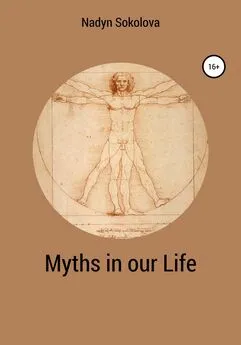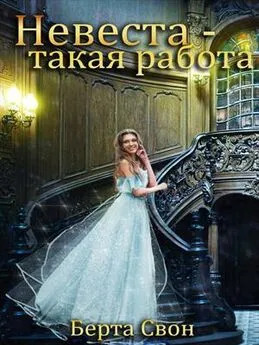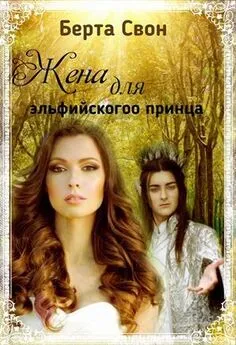Надежда Соколова - Myths in our Life
- Название:Myths in our Life
- Автор:
- Жанр:
- Издательство:неизвестно
- Год:2021
- ISBN:нет данных
- Рейтинг:
- Избранное:Добавить в избранное
-
Отзывы:
-
Ваша оценка:
Надежда Соколова - Myths in our Life краткое содержание
Myths in our Life - читать онлайн бесплатно ознакомительный отрывок
Интервал:
Закладка:
To understand mythological nature and its essence it is also important to regard the thought of the famous French ethnographer and thinker Claude Levi-Strauss, who wrote: "To understand the character of mythological thinking we should concede that myth is simultaneously endolinguistic and extralinguistic fact… Myth always belongs to the events of the past: "before creation of the world" or "in the old days" – at any rate, "ages and ages ago". But myth"s function consists in the fact that all these events, having existed in the certain period of time, are in existence out of time. Myth explains equally the past, the present and the future" [Levi-Strauss 2001: 216 – 217].
The study of myth as "conformation of culture and mensuration of human soul" plays an important role in culture. Such scientists and philosophers as G.F. Hegel, Z. Freud, C.G. Jung, J.G. Frazer, L. Levy-Bruhl, C. Levi-Strauss, A.F. Losev, E.M. Meletinsky, O.M. Freidenberg and others made an important contribution to myth"s understanding.
The concept of "myth" traces to the ancient Greek mythos that means story, narration, tale, legend. Its Latin analogue is fabula (narration, fable), and "elementary, or primitive mythology is the figurative poetical language that has been used by ancient tribes for clarification of natural phenomena" [Myths 1993: 5].
Many scientists and philosophers devoting themselves to mythology science elaborated their own classifications of myth"s explanation and development. Among modern scientists we can distinguish V.E. Halizev. His opinion about myth, like Losev"s conception, is similar to the author of the given research.
Mythology itself is treated by V.E. Halizev as "overepochal, transhistorical form of social consciousness existing in nation"s life during its history, which is connected with the peculiar way of thought" [Halizev 2002: 128; italics are of the author – N. Sh.].
Complicated by its nature, varied in manifestations mythology is also valuably polysemantic. This feature causes debates about its role in society. There exist two opposite opinions on value of mythology and possibility of its presence in human culture. Such scientists as R. Barthes, Y.M. Lotman notice in myth similar phenomena. In the book "Mythologies" (1957) Barthes characterized myth as "pseudoevidances" hiding "ideological fraud" under the power of which people get evoluntarily, as soon as they begin to discuss and summarize. The author considered that myths" aim was the world"s immobilization, its mortification: myth imposes the society an imagination about reality as primarily harmonious, thereby overturning and draining it [Barthes 1989: 46, 118, 126, 11 – 112].
In the same way mythologized consciousness is interpreted in semiotically cultural researches of Y.M. Lotman, orientated, according to him, at the scientific tradition of Aristotle and Deckard. Here myth is deduced out of culture"s framework: cultural area (rationally logical field) and mythological (irrational) area are opposed to each other [Lotman 1992: 15, 32].
G.G. Gadamer and D.S. Lihachev judge about mythology in totally different way. These scientists regard mythology as unique cultural value. In Gadamer"s article "Myth and Intellect" (1954) is said that scientifical and mythological world views are not antagonists, that "myth and intellect have common, movable by the same rules history" and that they are at the bottom of fact friendly and complementary. "Myth should not be derided as preachers" fraud or old wives" tales but the voice of the wise past". The philosopher mentions that "mythical charms" are unrational but myths are by no means voluntary imagination but bearers of proper, unscientific truth which "form great mental and moral strength of life" [Gadamer 1991: 97, 94, 98 – 99]. In the same way is produced Lihachev"s opinion about myth as "being packing", which serves as blessing and value "since it simplifies the world and our behaviour in it". It is even said that without "the mythologization of the being" the last "cannot be perceived" [Lihachev 1995: 341 – 344].
In the twentieth century the scientists began to learn such phenomenon as mythical (mythological) thinking. Some of them considered that "mythical thinking on the certain phase of development is the only possible, necessary, rational; it is peculiar not to any special time but people of all the times who are on the certain degree of thought evolution; it is formal, i.e. it does not exclude any content: either religious, philosophical or scientific" [Potebnya 1976: 260]. If to uphold this point of view it is possible to allege that in the modern twenty-first century myth-making did not lose its significance and actively develops nowadays. After all, as Potebnya asserted, thinking is called mythological only then when "an image is called objective and therefore is entirely transferred as reason for the subsequent conclusions about characteristics of the signified" [Potebnya 1976: 243].
It means that "the difference between mythical and non-mythical thinking consists in the statement that the more non-mythical thinking the more clearly is perception that the previous content of our thought is only the subjective method of perception; the more mythical thinking the more it is represented as sourse of perception" [Ibid.: 240; the italics belongs to the author. – N. Sh.].
The mythological thinking is described also by E. Levkievskaya in her book "Myths of the Russian nation". She considers that "for the person having mythological thinking myth is particularly practical knowledge with which he follows in real life like we in daily life follow the knowledge of highway regulations or personal hygiene" [Levkievskaya 2003: 4]. The author illustrates her thought with the following example: while losing his way in the forest a man, if he lives under the laws of myth, knows that it is wood-goblin who did him much harm. The wood-goblin could manage doing it because the man entered the forest without blessing. To unload the power of the creature of the other world and find the way home the one should lay the clothes off, to turn it inside out and put it on again – everything is upturned he other world [Ibid.]
It is really difficult to escape the influence of myth. It is eternal and omnipresent. The French scientist Roland Barthes affirmed that "myths overtake a person always and everywhere, they dispatch him to that immovable prototype which does not let him to live by his own live. Myths do not allow to breath easily (like a bloodsucker lodged inside the organism) and outline the narrow radius for the human activity where a person is allowed to fret not trying even somehow to change… the world. Myths represent the constant and tiresome exaction, insidious and uncompromising demand, for all people to recognize themselves in that eternal and nevertheless dated image that was once created, alledgedly once and for all" [Barthes 1989: 126].
But if the final deliverance from myth is really difficult the control of its influence is possible for everyone.
1.2. The concept of "a mythologeme" as the way of socio-cultural processes
The term "culture" in "The Dictionary of Russian Language" (edited by A.P. Evgenjeva in one of its meanings is explained as "the complex of the achievements of the human society in the industrial, social, and spiritual life" [The Dictionary 1986: 148]. The author of the given research accounts in the same way, and in the research "culture" would be understood according to the definition given in "The Dictionary of Russian Language" edited by A.P. Evgenjeva.
The concept "a mythologeme" was imported in the modern study of literature relatively late. In the encyclopedic reference book "The Modern Foreign Study of Literature" the mythologeme is defined as "the term of the mythological criticism, designating the borrowing from myth of the motive, theme, or its part and the reproduction in the later folklore works" [The Modern 1996: 236]. In the Internet dictionaries it is defined as "the conscientious borrowing of the mythological motives and their transferring in the world of the modern artistic culture" [www.yandex.ru].
The mythologemes enumerated above can be affixed to the life of everyone, influencing the destiny of the person. Mythologemes can be intruded in the handling of the information about a person with the help of mass media (it would be shown in the paragraph 3.3). It occurs because the mythologemes live in the culturally informational field of the society, influencing the separate person with the help of the actualization in mass media.
Usually the influence of the mythologemes on the human life happens spontaneously. But in the description of the biographies mythologemes are introduced artificially (see the same paragraph).
As it was earlier mentioned in the introduction the subject of the research in the given work is the study of the tree mythologemes called so on probation (mythologemes about Cinderella, Ugly Duckling and John-the-Fool) in the non-fictional popularization of the biographies of Johny Depp, Madonna and A. Pugacheva. The given mythologemes are dominated by the personal names (or the nominal names in this role) of the main heroes of the literary (1, 2) and folk (3) fairy-tales.
1.3. Myths in Russian and American cultures
The USA culture comprising with the Russian one is more structured and more homogenious. The Americans live by their own, special myth – myth about "an American dream" by which are understood "the ideals of freedom and open responsibilities for everyone, built on the belief in the boundless responsibilities of the USA and its unique place in the worldby which went, according to the official political mythology, "founding fathers"… of the United States of America. In the wide understanding the American values are from the highest ones to the most simple dream of an American about his own home" [Americana 1996:29].
"An American dream" is sort of deformation of the myth about John-the-Fool (see the paragraph 3. 2). Though, if to understand this term in the wide sense it can be allowed that all three myths are united in it (about Cinderella, Ugly Duckling and John-the-Fool). These myths are re-fused in the hearth of the American social relationships and are created in the unified fusion which got the name "the American dream".
Читать дальшеИнтервал:
Закладка:








![Надежда Соколова - Его любимая ведьма [publisher: SelfPub]](/books/1145050/nadezhda-sokolova-ego-lyubimaya-vedma-publisher-se.webp)

